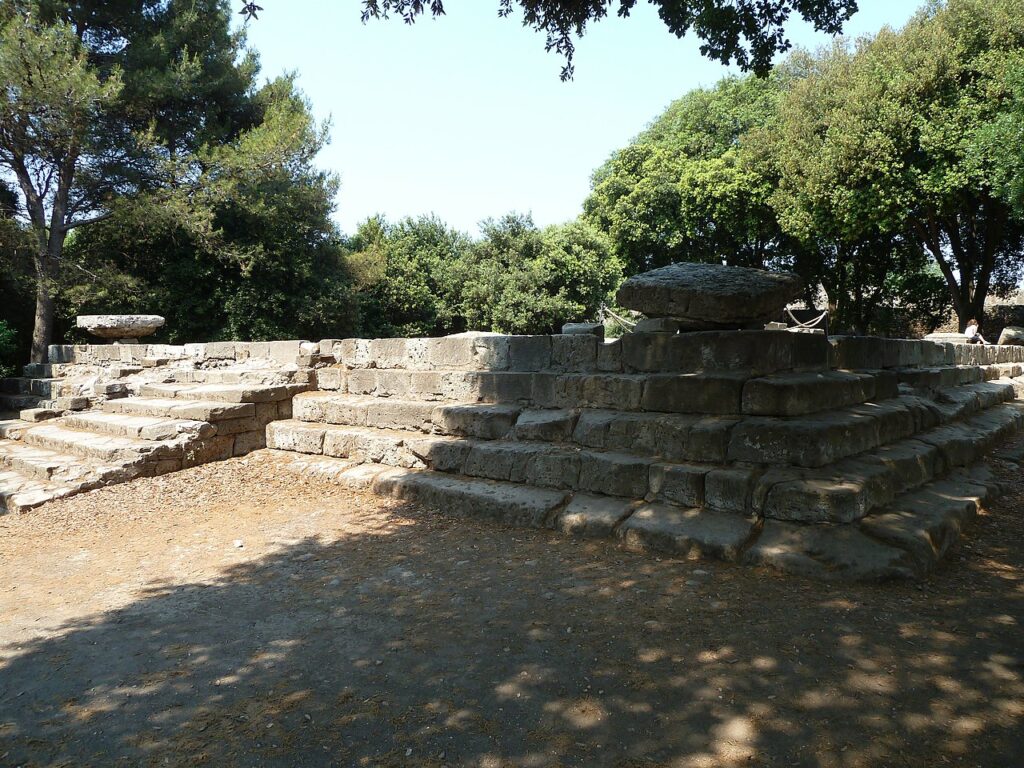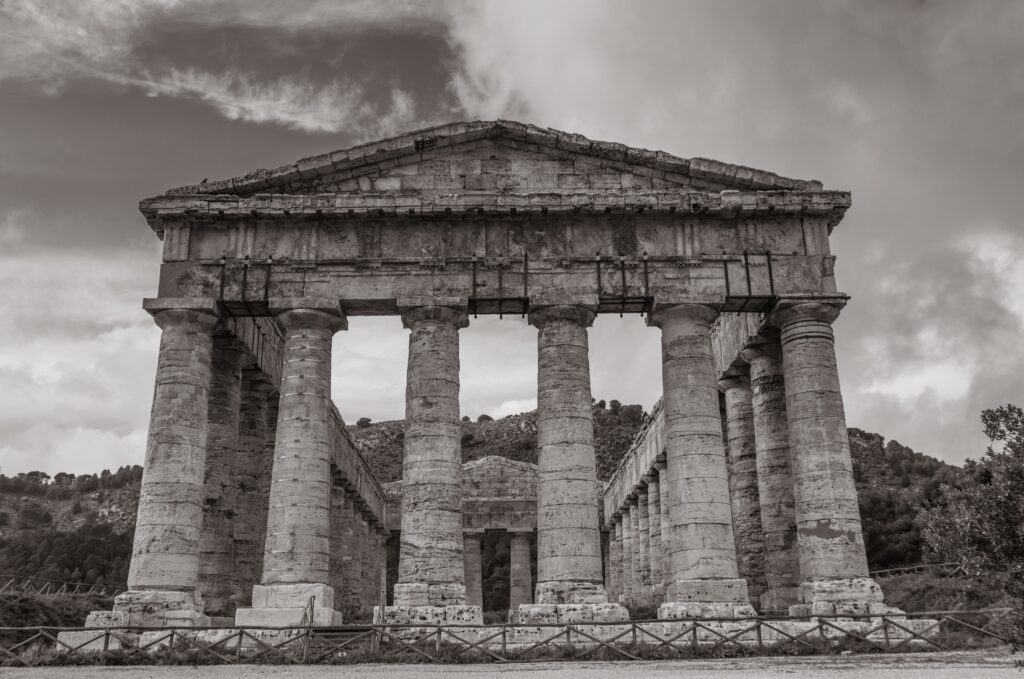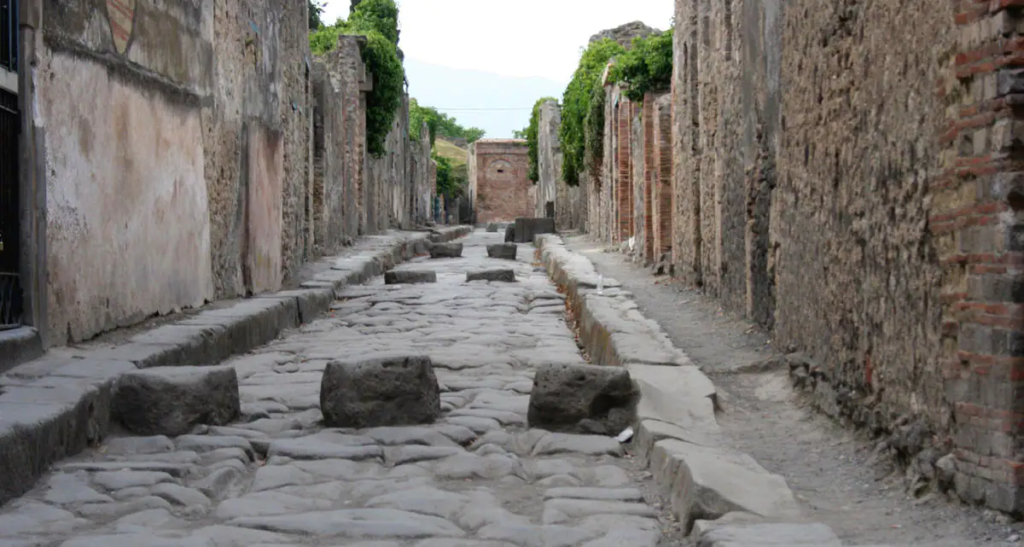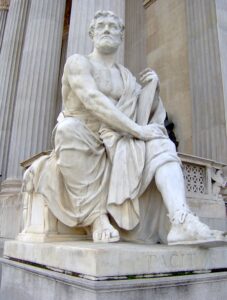Close to the Italian west coast, Southeast of Naples is the city of Pompeii, a city frozen in time and preserved in ash after the eruption of Mount Vesuvius in 79 CE. Today we explore the story of Pompeii.
Before it was a Roman town it is believed that Pompeii belonged to the Greeks. There are fragments of a Greek Doric Temple which date back to the 6th century BCE (Before common era sometimes referred to as BC). It is suggested it became a Roman settlement around 80 BCE.


WHEN DID IT ERUPT?
In 79 CE (common era sometimes referred to as AD), Mount Vesuvius erupted and certainly not for the first time with more than a handful of notable eruptions. An earlier eruption around 3500 years ago destroyed several bronze age villages. Still today the eruption of 79C is one of the worst in European history.
The date of the eruption is one of great debate (Great might be overselling it- I don’t think it’s a hot topic around the dining room table) There was an eye-witness account of the eruption which states the date of the eruption was the 24th of August. But evidence buried underneath the ash-food goods, clothing etc. suggests a later date and that the eruption took place in autumn. There are even some sources which say summer – this means… nobody really knows.
In October 2018, Italian archaeologists found an inscription dated the 17th of October. Because it was deemed unlikely to have been a year old it is estimated that the inscription was from the 17th of October 79 CE which could make the 17th of October the earliest possible date for the disaster.
An important note about history, particularly ancient history, before we move on. The more you look into history the more you’ll realise that it’s very difficult to be 100% accurate so it’s important to read multiple sources before you state something as fact- and probably wise not to state anything in ancient history as fact.
It’s off-topic but this is really important when it comes to reading about battles and wars in history- the people who write the history are the winners- so chances are they’re not going to give a 100% accurate description of what happened- they will also want to look like the good guys.
Anyway, let’s get back to Pompeii.
THE DESTRUCTION OF POMPEII
Despite the fact we don’t know the exact date (we’ll say at some point between August and the end of the year) what we do know is that Vesuvius erupted in 79 CE. And when it did the entire city was buried under a deadly cloud of ash and rock.
When the eruption occurred ash and rock were blasted into the air and there was so much of it that the sun was blocked out. As the debris start to rain down from the skies the people took shelter- probably fearing being bashed around the back of the head by one of the falling rocks- with the thought of “it’ll stop in a moment”.
The heavy rocks caused lots of buildings to collapse- trapping and suffocating people inside.
When the debris had stopped falling people will have gone back outside to find the town completely covered in ash, rock and dust. They had a bigger problem however, the raining ash and rock was just Vesuvius’s warm-up act (no pun intended).
Along with the ash and rock, Vesuvius had created a volcanic mushroom cloud which was just about to collapse in on itself. This cloud collapsing would send what is called pyroclastic flow surging towards the town of Pompeii.
A pyroclastic flow is a horrific current of hot gas and volcanic matter and is capable of reaching speeds of up to 430 mph (700kph). It’s so fast and hot that there is no chance of escaping it. (Unless you can run faster than 430 mph).
This meant the people of Pompeii were killed instantly as the pyroclastic flow blasted through the once vibrant town. It is estimated that 16,000 people lost their lives as a result of the eruption.
As with the majority of natural disasters, Pompeii wasn’t repaired after the eruption and eventually the town was forgotten about.
You might wonder why the townspeople didn’t evacuate when the volcano exploded. The thing is they didn’t know that Vesuvius was a volcano, the Romans (who spoke Latin) didn’t even have a word for volcano. They most likely thought Vesuvius was a mountain with tummy problems. (By tummy problems I mean that they thought the earthquakes were caused by a God-like power in Vesuvius itself).
Speaking of earthquakes, there were several large earthquakes in the years preceding the eruption which, with today’s knowledge, would have been a warning sign that Vesuvius may be about to erupt. The largest of the earthquakes was in 62 CE which damaged a lot of the town and repairs were still being made when the volcano erupted.
WHAT WAS POMPEII LIKE BEFORE THE ERUPTION OF MOUNT VESUVIUS?
From what can be deciphered from what has been found Pompeii is believed to have been a prosperous town. It was probably a popular holiday destination for the rich Romans- many of which would have had holiday homes there. Pompeii had over 100 paved streets, high sidewalks and even stepping-stones to keep pedestrians out of the mud and rainwater- how thoughtful!

There were public baths, a Roman forum, an amphitheatre where they could watch chariot races and the slightly stranger pubic entertainment of gladiators killing each other. If blood and gore didn’t fill the appetite there were two theatres where residents and visitors could enjoy plays.
There was a port, a gymnasium and believe it or not it was one of the biggest hubs for fish sauce production. At least it was until the Spanish put them out of business and sold their sauces to the Romans at a much lower price. Pompeii even had a fairly developed water system, including an aqueduct.

FINDING POMPEII
Pompeii was rediscovered by an architect (a person who plans, designs and oversees the construction of buildings) Domenico Fontana in the late 16th century and excavation work began in 1748. The place wasn’t identified as Pompeii until 1763 when an inscription that read “Rei publicae Pompeianorum” which translates to “the commonwealth of Pompeians”.
You may have heard that they found lots of bodies in the excavations of Pompeii- this isn’t as truthful (or as creepy) as it may first appear.
As the bodies of the buried started to decompose they left a void (imagine a body-shaped hole) in the ash. After a short time, the excavators started to pour plaster-of-paris into the
void left by the bodies. This meant you got an exact replica of the person who had been buried in the ash- and what’s kind of creepy is that once you have this replica of a person
you can copy it over and over again and make yourself a clone army of Pompeii resident lookalikes- perhaps not the most respectful way to remember the dead.
Excavations are still taking place today so who knows what they’re going to find. Recently they found the remains of a turtle who had been taking shelter in an already collapsed building (probably damaged in the 62CE earthquake) when Vesuvius erupted.
HOW DO WE KNOW THIS?
So you have probably got this far and are now thinking- how on Earth do we know this? Well, believe it or not, there were eyewitnesses to the destruction of Pompeii. Most of the historic information comes from someone called Pliny the Younger who witnessed the destruction and also spoke to other eyewitnesses. He wrote it down the events of what happened in two letters and sent it off to a big writer and historian of the Roman period- Tacitus.

It was Pliny the Younger who said the eruption was on the 24th of August- does it being an eyewitness report make it more accurate? Then you get to the whole “can we be certain he was actually there” argument. I’m sticking to saying the disaster happened between August and the end of the year 79 CE.
POMPEII TODAY
Today Pompeii is a world heritage site, which means it’s protected and preserved and is somewhere that you can visit but perhaps more worryingly scientists think Vesuvius is overdue for another eruption- luckily the warning systems are much more advanced than they were back in ancient history.
Pompeii is high on my bucket list of places to visit and hopefully one day I will be able to.
If you’re fancying some roman history you can read this blog about 5 Roman Emperors you really should know.
You can learn more about volcanoes in this post.
Thanks for reading- let me know your thoughts in the comments below.
